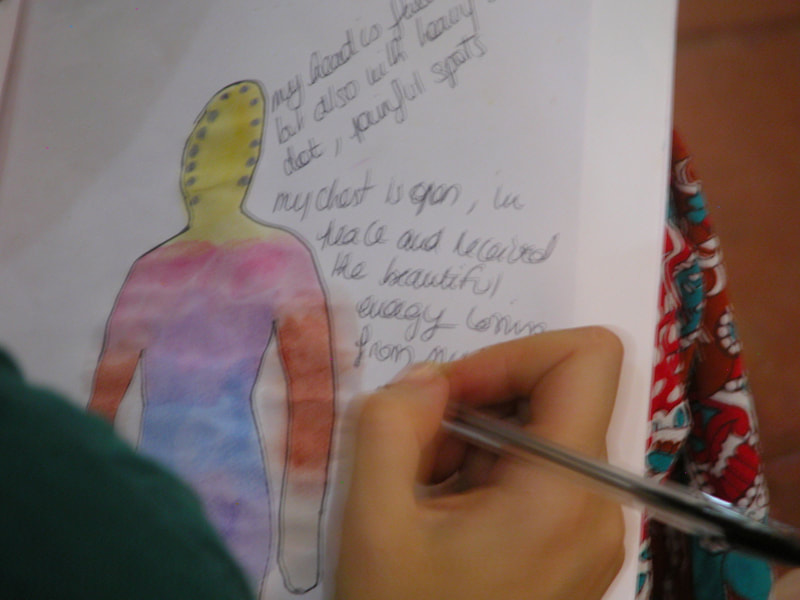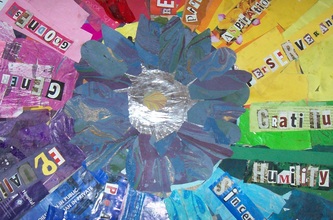
WHAT IS ART THERAPY?
Art Therapy provides a voice where one may or may not exist. Throughout history, drawing, painting, sculpture and other forms of art served as powerful and effective means of communication for all cultures. Art has been used for the communication of ideas, feelings, dreams, aspirations, spiritual symbolism, and the expression of a wide range of emotions without having to use words. Throughout history, Art has been used as a vehicle for healing.
Making art is basic to human nature. Art Therapy is a relatively new field that has been and continues to be shaped by many disciplines: art, culture, education, anthropology, sociology, psychology, psychiatry, the medical sciences, and more currently, mindfulness, spirituality and neurobiology. Initially, Art Therapy was used with physically ill people in hospital settings and within the field of psychiatry within psychiatric hospitals. Art Therapy has now expanded to every possible sector of society, utilized with people of any age, gender, culture and level of ability or "disability".
Art Therapy can be used with individuals, couples, families and groups. Art Therapy has been utilized on-site, in real- time and there after, with those suffering from the effects of all sorts of natural and man made disasters such as the Tsunami, 9/11, earthquakes, floods, the aftermath of tornadoes, in refugee camps and populations, such as Veterans and the United Nations. Currently, Art Therapy is effective and being widely utilized, to help people to recover from Trauma, Developmental or Event based, long and short term. The applications and adaptations of Art Therapy are infinite. There are no barriers or limitations to receive the benefits of art therapy.
Additional benefits of employing Art Therapy practices in healing, are the Brain Benefits. Art Therapy practices such as Bilateral Drawing, utilizes both sides of the brain simultaneously, stimulating brain cells as it calms and soothes the Brain Stem and the Nervous System.
Within my Trauma Informed Art Therapy and Counseling practice, HEALING through the Creative Art Therapies, specifically Art, Writing, Reflecting, are instrumental in reconnecting, recreating and recovering from TRAUMA and the multifaceted symptoms of Trauma. One of the most effective tools I incorporate in my practice is Bilateral Drawing....... Clients are able to utilize this form of body-informed, sensory-motor Art Therapy, in the studio, at home or where ever they are, to ground and sooth themselves, by this method of self- massage, through drawing.
"This embodied art therapy is informed by neurobiological insights into human stress responses... .
To release the tension held in the body in a self-directed way proved to be empowering....
listening to inner guidance, to what the body needs to restore self-esteem, balance and health."
Cornelia Elbrecht, Healing Trauma with Guided Drawing
Art Therapy and Counseling through a Trauma Informed lens....In my practice, I employ an eclectic, integrative toolbox of Creative Arts Therapies, and traditional Counseling practices, all implemented through a Trauma Informed Lens. What does that mean? According to Judith Herman, in "Trauma and Recovery", recovering from Trauma "unfolds in three stages". The first stage is establishing a sense of Safety, which I include, developing a therapeutic relationship, and establishing a self-care routine. The second stage of recovery is Remembering, retelling the story or the many aspects of the story, and how it affects your present day thoughts, feelings and behaviors...making connections, AHA moments, mourning, grief, anger and rage are all accepted. Remembering comes through the telling of the story in infinite ways. Empowerment plays an equally significant part in this second stage, since retelling your story can be frightening and triggering. The supportive and incremental processes of working through the creation of the story, builds a sense of mastery, builds self esteem, confidence and restores one's authenticity. The third stage according to Herman is Reconnection. As one comes to terms with their Trauma, and how their trauma manifested throughout their life into the present, the "survivor faces the task of REcreating a future", Judith Herman. The reconnection and recreation are able to be expressed through many forms, such as art, poetry, storytelling, dance, performance. As the survivor reconnects with his/her authentic self, with family, friends and the community, the re-creation becomes the bridge for reconnection. These stages do not occur in a linear fashion. They take time, nurturing and courage. There are ups and downs, and the true self are simultaneously built up and pealed away incrementally.....
According to pioneers in the field of Trauma, such as Peter Levine, Besel Van Der Kolk, Vija Lusebrink and Cathy Malchiodi, recovery from Trauma is indeed possible, and is facilitated through different Stages (Herman) or a three part healing Continuum (Lusebrink); sensory/kinesthetic, affective (emotional)/perceptual, and the cognitive. All in all, these theories and practices have basic premises in common; Trauma, event based, developmental, or intergenerational, has affected the brain and its development, lives as a physical being in your body, and a sense of safety, must be established, for any level of recovery to occur. Art Therapy through a Trauma-Informed lens is delicate, dynamic, incremental, and always nurturing and supportive.
The American Art Therapy association defines Art Therapy as "The therapeutic use of art making, within a professional relationship, by people who experience illness, trauma or challenges of living, and by people who seek personal development. Through creating art and reflecting on the art products and processes, people can increase awareness of self and others, cope with symptoms, stress and traumatic experiences, enhance cognitive abilities and enjoy the life-affirming pleasure of making art."
I like Cathy Malchiodi's description of the power of art therapy in Expressive Therapies. She writes, "the power of art (and play) helps people experience their world in new ways, communicate thoughts and feelings, induce positive change, and enhance health and well-being."
This power and essence of Art Therapy comes from its non-verbal aspect of art making to communicate thoughts, feelings, ideas and images, which transcend barriers of communication. These "barriers" of communication may be physical, social/emotional, psychological, cognitive or cultural.....Art Therapy transcends all boundaries and provides a "voice".



















